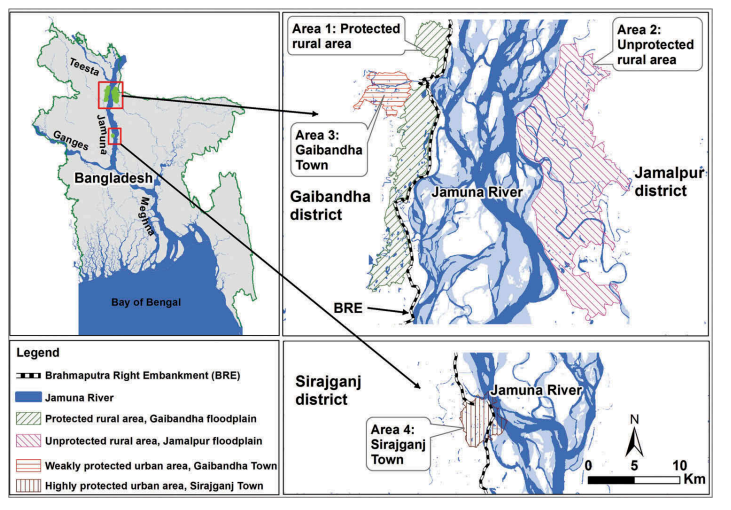Floodplain dynamics in the Jamuna river, Bangladesh
The levee effect, postulated in 1945 by Gilbert White, refers to the paradox that the construction of a levee to protect from flooding might induce property owners to invest more in their property, increasing the potential damages should the levee breach. Thus, paradoxically, the levee might increase flood risk.
We studied the levee effect in a very vibrant socio-nature environment in a reach of the Jamuna River, in Bangladesh in a 4-year research project funded by the Dutch Scientific Research Institute. This project was a cooperation between local government and researchers from UNESCO-IHE Delft, Uppsala University and KTH.
The study area is characterized by rural unprotected floodplain on the left and a rural levee-protected floodplain on the right bank (called Bramaputra Right Embankment, BRE).
Furthermore, the southern part of the BRE has been reinforced in the ´90s, while the northern part has not. An urban area is located behind the weak BRE and another urban area is located behind the reinforced BRE in the south.

We analyzed floodplain dynamics, migration patterns and costs of adaptation effect in the Jamuna river.
Here a list of papers where findings have been shared: